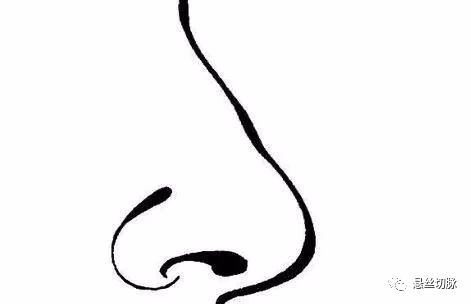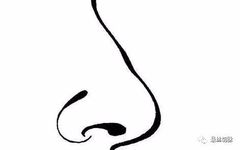
The nose is the orifice of the lungs, responsible for respiration. Additionally, as the Yangming meridian passes near the nose, we can clinically discern the pathological changes of the lung and stomach meridians through the olfactory examination of nasal odors.

① Nasal Odor
[Olfactory Diagnosis] There is a foul odor when exhaling from the nasal cavity, and the patient does not perceive any pleasant or foul smells themselves.
[Clinical Significance] This indicates deficiency of lung and spleen qi, with pathogenic toxins retained. Due to lung deficiency, there is insufficient qi and fluids, leading to a lack of nourishment for the nose, making it susceptible to pathogenic invasion. The retention in the nasal orifices causes stagnation in the vessels, and over time, the yin fluids are consumed. The mucous membranes become deprived of nourishment, resulting in nasal dryness. The atrophy of the mucous membranes leads to nasal odor; additionally, since the spleen is the mother of the lung, responsible for the transformation and transportation of the essence of food and fluids, a deficiency in the mother affects the child. Furthermore, the spleen governs the muscles; if the spleen is deficient, the mucous membranes will lack nourishment, and if the spleen fails to transform dampness, the damp-heat will scorch the mucous membranes, leading to dryness and nasal odor. This condition corresponds to modern medicine’s “atrophic rhinitis.” Moreover, if there are ulcers or necrosis in the nasal area, the decayed flesh and putrid blood can emit a foul odor, making it difficult to approach, as seen in conditions like “syphilis,” “leprosy,” or cancer. This often results from exposure to foul odors, with pathogenic toxins accumulating over time, eroding the nasal area and injuring qi and blood.
[Treatment Method] For lung deficiency, it is advisable to nourish yin and moisten the lungs, disperse lung pathogens, using the formula Qing Zao Jiu Fei Tang (Clear Dryness and Rescue the Lungs Decoction); for spleen qi deficiency, it is advisable to tonify the spleen and benefit qi, promoting the earth to generate metal, using Bu Zhong Yi Qi Tang (Tonify the Middle and Benefit Qi Decoction) with modifications.
② Fishy Nasal Odor
[Olfactory Diagnosis] There is a constant flow of greenish-yellow purulent nasal discharge, with a fishy odor in the nasal cavity.
[Clinical Significance] This is caused by nasal phlegm-heat. It usually results from external invasion of internal heat pathogens or wind-cold attack, which over time transforms into heat, ascending to invade the nasal orifices, internally affecting the lungs, leading to lung channel heat, with pathogenic heat ascending and causing illness. This condition corresponds to modern medicine’s “sinusitis.”
[Treatment Method] It is advisable to use aromatic herbs to open the orifices, clear the lungs, dispel wind, and eliminate heat, using the formula Cang Er Zi San (Xanthium Powder) with modifications.
③ Urine-like Nasal Odor
[Olfactory Diagnosis] There is a urine-like odor when exhaling from the nose.
[Clinical Significance] This is commonly seen in patients with late-stage water qi disease, usually caused by the decline of the organ’s essence and the upward rise of turbid qi.
[Treatment Method] Treatment should be based on the specific clinical condition, selecting appropriate methods and formulas.
刺激性蒜味
[Olfactory Diagnosis] There is a pungent garlic-like odor in the nose.
[Clinical Significance] This is often seen in cases of organophosphate poisoning.
[Treatment Method] Treatment should be based on the specific clinical condition, selecting appropriate methods and formulas.

⊙ Disclaimer: All articles published on this platform are for educational knowledge and reference only. Please follow medical advice for medication! Images are sourced from the internet; if there is any infringement, please delete.
 Common Skin Diseases: Psoriasis, seborrheic dermatitis, vitiligo, herpes, rosacea, pustular psoriasis, pyogenic bacterial infections, scabies, tinea, ichthyosis, axillary odor, flat warts, folliculitis, alopecia areata, hair loss, dyshidrotic eczema, mite dermatitis, eczema, urticaria, skin itching, hair loss, chloasma, onychomycosis, acne, allergic purpura, tinea pedis, etc.
Common Skin Diseases: Psoriasis, seborrheic dermatitis, vitiligo, herpes, rosacea, pustular psoriasis, pyogenic bacterial infections, scabies, tinea, ichthyosis, axillary odor, flat warts, folliculitis, alopecia areata, hair loss, dyshidrotic eczema, mite dermatitis, eczema, urticaria, skin itching, hair loss, chloasma, onychomycosis, acne, allergic purpura, tinea pedis, etc.


